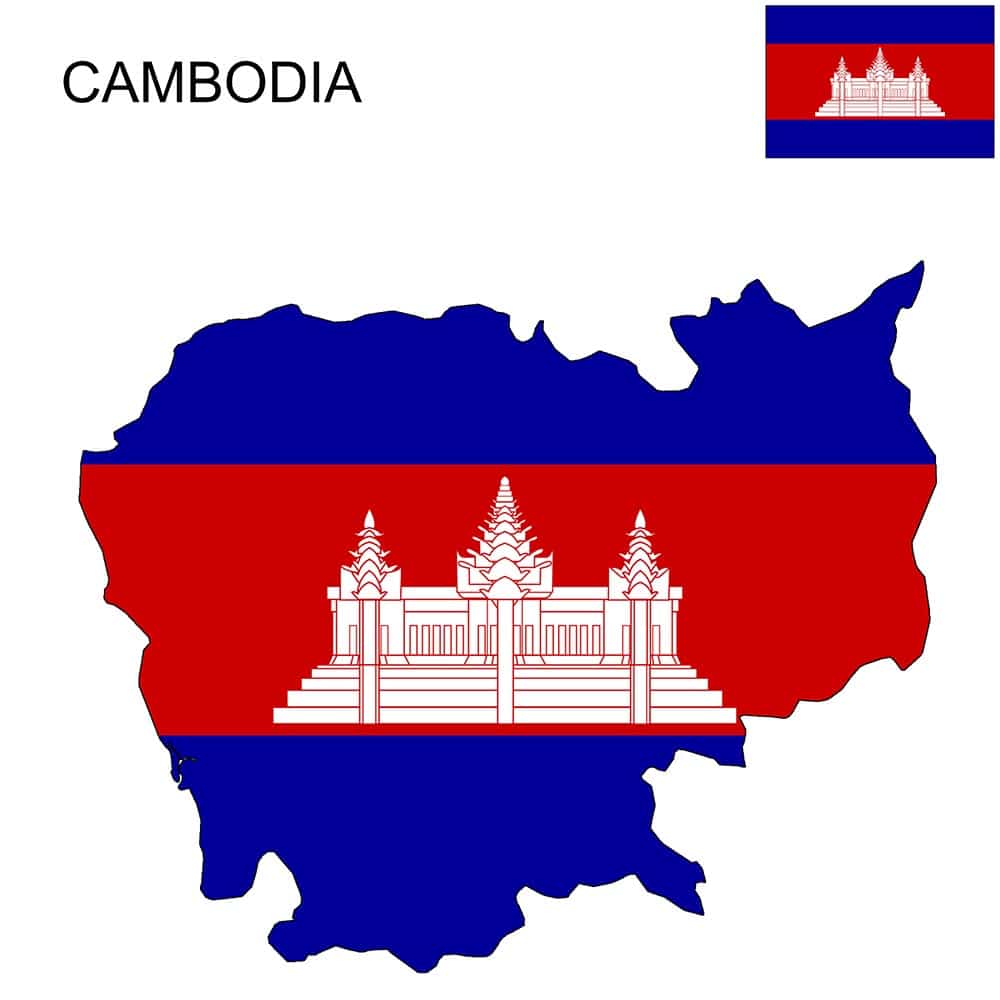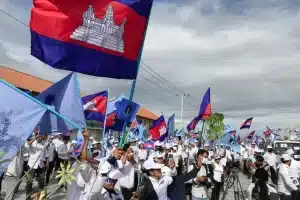Headlines
Cambodia: A Land of Rich History and Cultural Legacy

Cambodia is a country located in Southeast Asia, bordered by Thailand to the northwest, Laos to the northeast, Vietnam to the east, and the Gulf of Thailand to the southwest. The country has a rich and fascinating history that dates back to prehistoric times. The first humans in Cambodia were Stone Age hunters and gatherers. However, farming was introduced into Cambodia in about 2,300 BC.
See Population, Official Language And More…

Cambodia
Between the 11th and 13th centuries, the Khmer (Cambodian) state included much of the Indochinese mainland, incorporating large parts of present-day southern Vietnam, Laos, and eastern Thailand. The cultural influence of Cambodia on other countries, particularly Laos and Thailand, has been enormous. The Khmer Empire was one of the most powerful empires in Southeast Asia during its time. It was known for its impressive architecture, including the famous Angkor Wat temple complex.
In 1863, Cambodia became a protectorate of France. During World War II, Japan occupied Cambodia from 1941 to 1945. After the war ended, Cambodia regained its independence from France in 1953. In 1975, the Khmer Rouge regime took control of Cambodia and began a reign of terror that lasted until 1979. During this time, an estimated 1.7 million people died from execution, starvation, or disease.
Today, Cambodia is a constitutional monarchy with a king as its head of state. The country has made significant progress since the end of the Khmer Rouge regime. It has become a popular tourist destination due to its rich history and culture.
Cambodia is a country in mainland Southeast Asia with a rich history that can be traced back to Indian civilization. The first detailed records of a political structure on the territory of what is now Cambodia appear in Chinese annals in reference to Funan, a polity that encompassed the southernmost part of the Indochinese peninsula during the 1st to 6th centuries. Funan is noted as the oldest regional Hindu culture, which suggests prolonged socio-economic interaction with maritime trading partners of the Indosphere in the west. By the 6th century, a civilization called Chenla or Zhenla in Chinese annals firmly replaced Funan, as it controlled larger, more undulating areas of Indochina and maintained more than a singular center of power.
The Khmer Empire was established by the early 9th century. Sources refer here to a mythical initiation and consecration ceremony to claim political legitimacy by founder Jayavarman II at Mount Kulen (Mount Mahendra) in 802 CE. A succession of powerful sovereigns, continuing the Hindu devaraja cult tradition, reigned over the classical era of Khmer civilization until the 11th century. A new dynasty of provincial origin introduced Buddhism, which according to some scholars resulted in royal religious discontinuities and general decline. The royal chronology ends in the 14th century. Great achievements in administration, agriculture, architecture, hydrology, logistics, urban planning and the arts are testimony to a creative and progressive civilization – in its complexity a cornerstone of Southeast Asian cultural legacy.
The decline continued through a transitional period of approximately 100 years followed by the Middle Period of Cambodian history, also called the Post-Angkor Period, beginning in the mid-15th century. Although the Hindu cults had by then been all but replaced, the monument sites at the old capital remained an important spiritual center.





